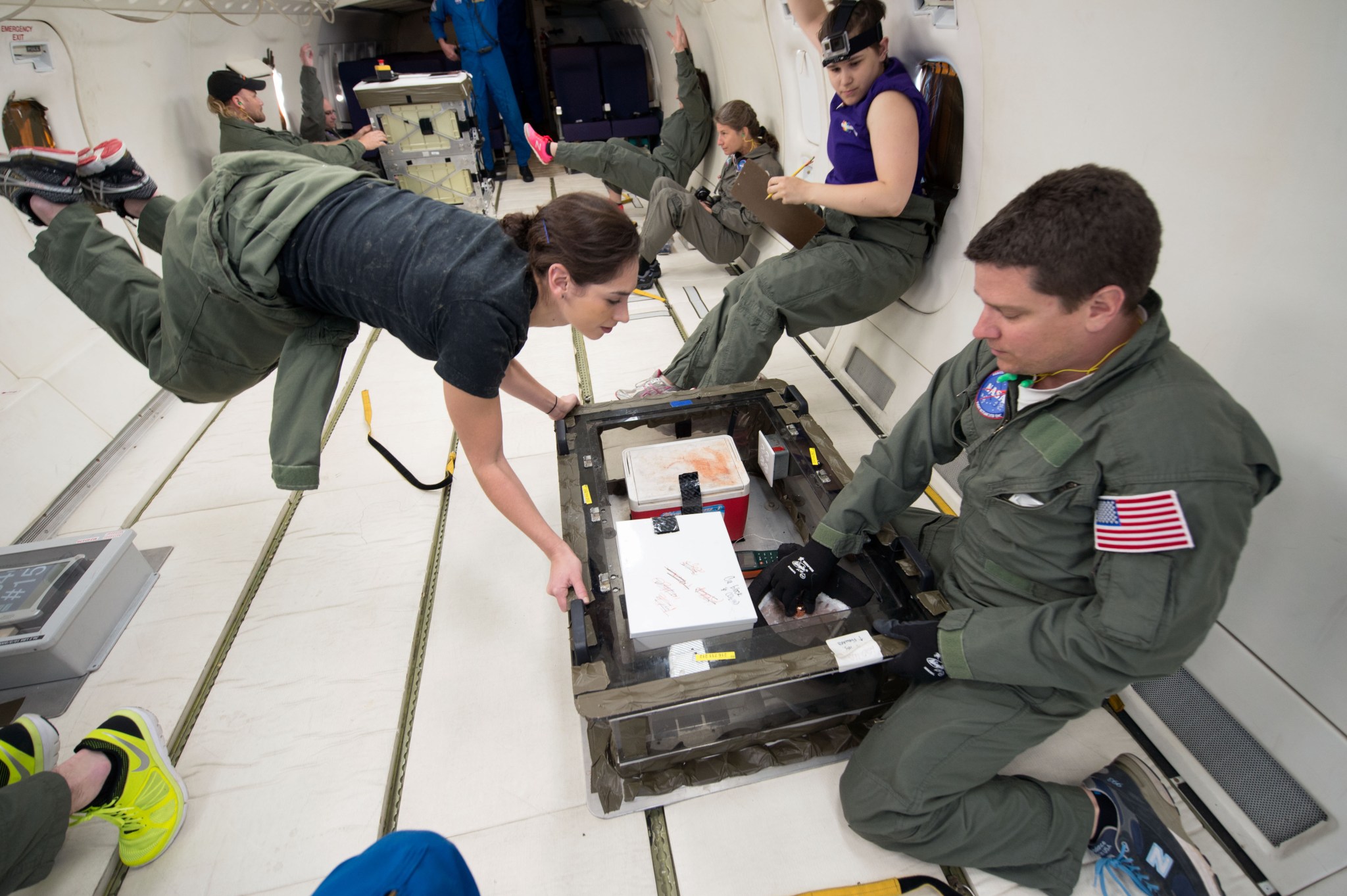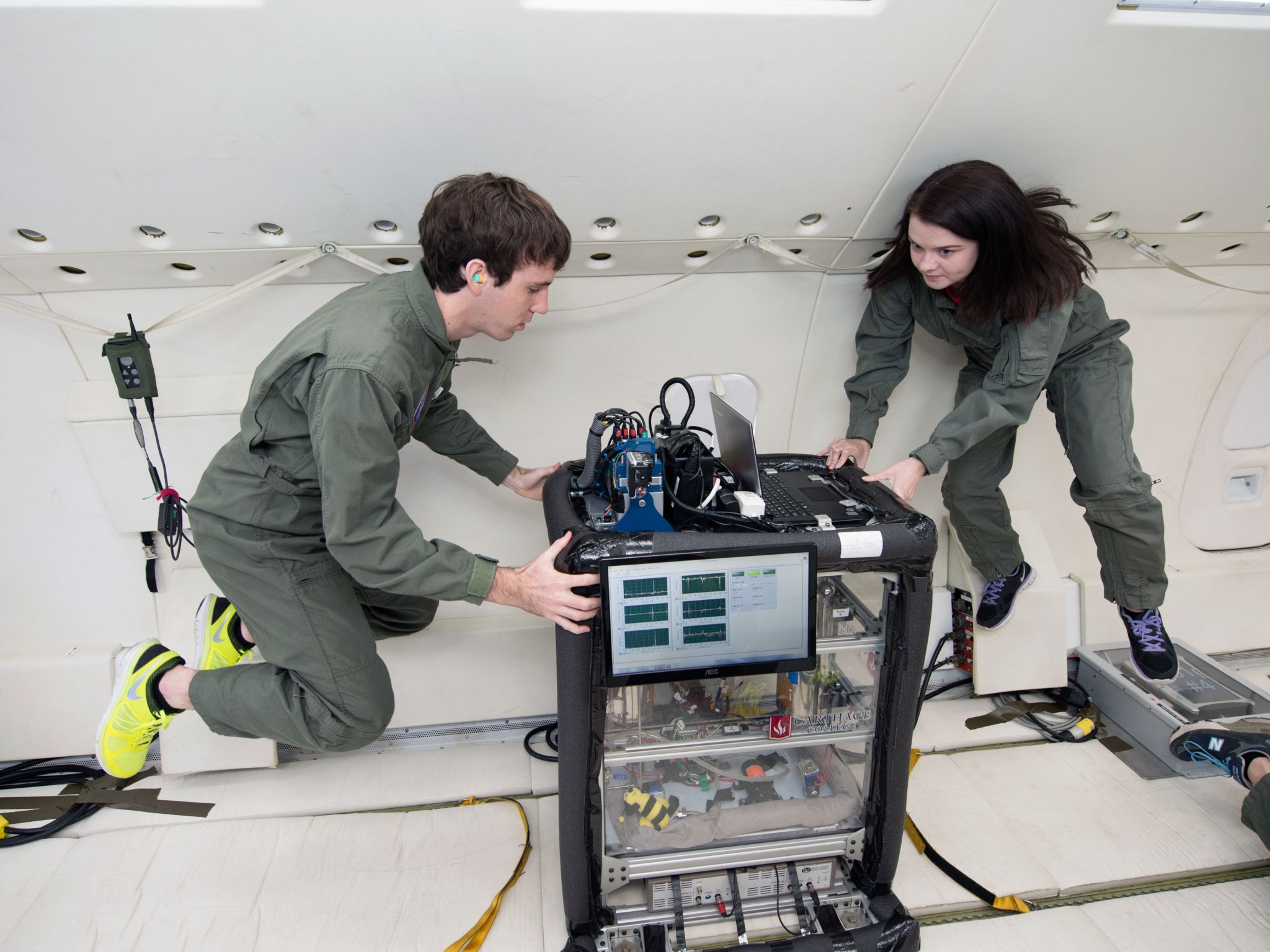Flying on NASA’s C-9B parabolic aircraft, researchers tested their experiments during June 9 to 11 flights, which simulated either zero gravity, or the gravity of an asteroid. The plane flew a total of 188 parabolas during the four-day campaign.
Five research teams from universities and two NASA centers began arriving at Ellington Field near Houston Texas on June 5 to prepare their experiments for the parabolic flights the following week.
NASA Ames Research Center, Moffett Field, California, tested its Suborbital Flight Environment Monitor that will be used to test the flight environment within the experiment’s container as it encounters the flight dynamics of launch. The agency’s Jet Propulsion Laboratory, Pasadena, California, together with Stanford University, tested its Microgravity Mobility Models for hopping and tumbling robots to assess the control of the mobility of robotic platforms in low gravity environments.
The University of Florida, Gainesville, tested its new imager on biological samples in real time to evaluate the effects of the suborbital environment on both the samples and imager. No flight ready biological imaging technology has been proven in the sub-orbital flight environment.
Northwestern University, Evanston, Illinois, tested its nanoporous metal foam experiment created in microgravity, which has shown to be superior to the foam created under normal terrestrial conditions. The titanium foam created in suborbital environment exhibits properties of high strength and low weight, both of interest to industry and NASA.
Carthage College, Kenosha, Wisconsin, tested a propellant mass gauging experiment that has been characterized in a lab but not in unsettled fuel states such as zero gravity. Potential users could be commercial space, life support and habitation.
Leslie Williams, Acting News Chief
NASA Armstrong Flight Research Center





























